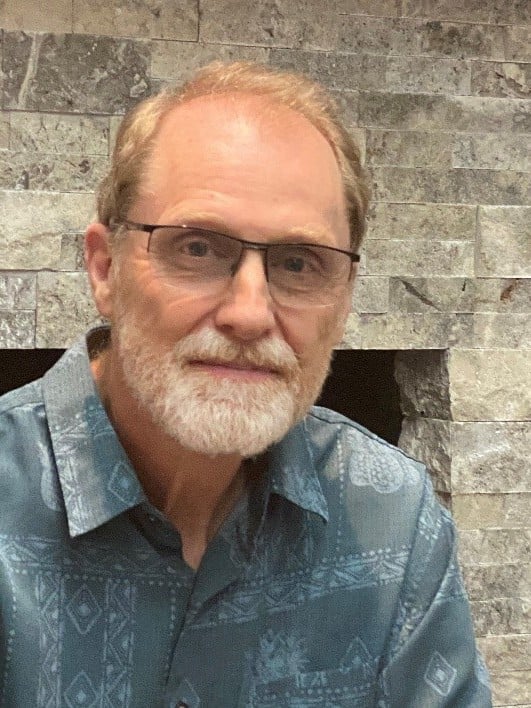When Hope Fades: Understanding Despair Through Perceptual Style Theory™

 Maybe you’ve seen it in someone you care about — or felt it yourself. It’s the quiet moment when a person stops believing things can get better. The spark fades. Conversations shift from “This is hard” to “Why bother?”
Maybe you’ve seen it in someone you care about — or felt it yourself. It’s the quiet moment when a person stops believing things can get better. The spark fades. Conversations shift from “This is hard” to “Why bother?”
These moments are showing up everywhere right now — in private lives, in headlines, and in the subtle undercurrent of worry many people carry about the future.
Despair is not simply sadness or grief. It’s what happens when hope slips away and life begins to feel unchangeable.
As a clinical psychologist, I’ve seen how differently people experience this state depending on how they’re wired to see the world. Perceptual Style Theory™ offers a powerful lens for understanding why despair strikes each of us in unique ways — and, more importantly, how we can find our way back to hope.
What is despair?
Simply stated, despair is the absence of hope. It convinces us that nothing will get better and that we are powerless to change it. We distinguish it from grief, which arises from loss — the loss of someone important, of relationships, dreams, life roles, or a way of life.
Grief is a process of hurting, letting go, integrating pain, allowing it to reshape us, and eventually moving forward. Despair, by contrast, occurs when the pain cannot be integrated, when loss overwhelms, and when the future feels unimaginable. It is the feeling that “It just doesn’t matter anymore.”
Grief, painful as it is, can help us grow, find meaning, and become stronger. Despair, on the other hand, erodes meaning, extinguishes faith, and is emotionally, spiritually, and psychologically dangerous.
Personal Versus Cultural Despair
Personal despair centers on an individual’s life — relationships, health, career, meaning, or identity. It feels intimate and existential, often tied to trauma, grief, or a perceived lack of purpose. It may sound like “My life has no meaning” or “There’s no way forward for me.”
Symptoms often include emotional heaviness, withdrawal, loss of motivation, or even thoughts of self-dissolution.
Healing comes through restoring agency, connection, or meaning — whether through therapy, nurturing relationships, spiritual grounding, or aligning with natural strengths such as those highlighted in Perceptual Style Theory.
Cultural despair encompasses society as a whole — institutions, culture, or the broader direction of humanity. It feels collective and outward-facing, rooted in fears about corruption, climate change, political division, cultural fragmentation, or the loss of shared values.
Thoughts often sound like “Our society is broken beyond repair” or “The future of humanity is doomed,” accompanied by cynicism, disillusionment, or civic withdrawal.
Healing requires community, collective action, and re-engagement in cultural life. Hope is found in shared possibility and small but meaningful progress.
Key Difference: Personal despair says “There’s no hope for me.” Cultural despair says “There’s no hope for us.”
While they often reinforce each other, the pathways to healing differ: one focuses on individual meaning, the other on collective renewal.
Countering Despair Through the Lens of Perceptual Style Theory
Across all six Perceptual Styles™, despair often emerges when one’s worldview is denied or invalidated, leaving meaning unconfirmed and connection severed.
Despair is a heavy state, born of powerlessness, disconnection, or loss of meaning.
Yet how we counter despair depends on how we perceive the world. Each Perceptual Style carries within it both a unique vulnerability and a natural antidote.
Activity: Rekindling Momentum
Despair for Activity arises when life feels stagnant or immobilized. Action is lifeblood, and without it hopelessness grows.
Antidote: Movement restores hope. Physical activity, projects, or small, actionable steps create momentum. Even modest victories — washing dishes, making a call — rekindle agency. For Activity, hope is rediscovered in doing.
Example: When James lost a big client, despair hit quickly. He forced himself to clean his office, organize files, and contact two colleagues. By week’s end, he had new opportunities and renewed energy.
Adjustments: Restoring Safety
Chaos and instability trigger despair for Adjustments. When life feels unpredictable, hopelessness follows.
Antidote: Safety and stability must be rebuilt. Grounding routines — meals, sleep, daily rituals — restore predictability. Trusted relationships offer reassurance. Relaxation techniques soothe the system. For Adjustments, hope returns when life feels safe again.
Example: After being laid off, Maria created a steady routine — morning walks, scheduled job searches, and nightly calls with her sister. These anchors restored stability and eased her despair.
Flow: Reweaving Connection
Disconnection — from people, nature, or life’s rhythms — invites despair for Flow. Loneliness and artificial structures feel especially suffocating.
Antidote: Reconnection is healing. Immersion in nature, art, or music restores harmony. Heart-to-heart conversations rebuild bonds. Creative expression transforms despair into beauty. Spiritual practice renews unity with the whole. For Flow, hope is found in connection.
Example: During the pandemic, Daniel turned to painting landscapes and weekly video calls with friends. Creativity and connection lifted his sense of isolation.
Goals: Restoring Progress
Blocked progress or halted achievement breeds despair for Goals. Without forward momentum, hope fades.
Antidote: Progress must be rebuilt, step by step. Setting achievable goals and tracking progress reignite drive. Revisiting purpose restores direction. For Goals, hope comes from accomplishment and forward motion.
Example: When his promotion fell through, Marcus set a fitness goal: training for a half marathon. Tracking his runs gave him tangible proof of progress, reviving his motivation.
Methods: Rebuilding Order
Disorder and broken systems fuel despair for Methods. Without structure, life feels adrift.
Antidote: Restoring order grounds the spirit. Plans, routines, and practical solutions return stability. Learning new skills or applying analysis creates mastery. For Methods, hope is rediscovered in order and competence.
Example: Following a painful divorce, Raj created a weekly schedule for meals, work, and personal time. As structure returned, despair loosened its grip.
Vision: Opening New Possibilities
Despair takes root for Vision when the future appears closed, when possibilities vanish.
Antidote: Reframing and expanding perspective reignites hope. Visualization, goal-setting, and exposure to new ideas spark imagination. For Vision, hope lies in glimpsing fresh possibilities.
Example: After her startup failed, Alyssa attended a virtual conference brimming with bold ideas. Inspired, she sketched out new possibilities, reigniting her hope for the future.
A Style-Specific Path Back to Hope
Despair touches all of us, but its weight is carried differently depending on how we perceive the world. Each Perceptual Style has its own vulnerability, but also a unique pathway out.
By honoring our perceptual strengths, we can counter despair not with generic solutions but with strategies aligned to our lived experience.
Despair is a formidable adversary, whether personal or cultural. Yet Perceptual Style Theory reminds us that within the very way we engage the world lie the seeds of renewal.
When we understand how despair shows up for us — and align with the strengths of our style — we reclaim agency, connection, and hope. The pathways differ, but the outcome is the same: a reawakening to possibility, purpose, and life.
Despair may silence hope for a time, but with awareness, compassion, and the right tools, hope can be restored — and with it, the courage to move forward.
Please share your thoughts on this topic in the comment section below.
Explore the services that we provide to support the success you want and deserve!
© Vega Behavioral Consulting, Ltd., All Rights Reserved
About Dr. Gary M. Jordan, Ph.D.
Gary Jordan, Ph.D., has over 35 years of experience in clinical psychology, behavioral assessment, individual development, and coaching. He earned his doctorate in Clinical Psychology from the California School of Professional Psychology – Berkeley. He is co-creator of Perceptual Style Theory, a revolutionary psychological assessment system that teaches people how to unleash their deepest potentials for success. He’s a partner at Vega Behavioral Consulting, Ltd., a consulting firm that specializes in helping people discover their true skills and talents.
Meet Dr. Gary Jordan — Explore his background and contributions to the Perceptual Style Theory